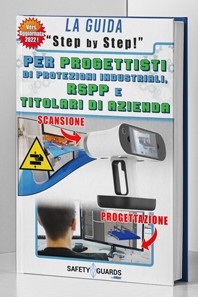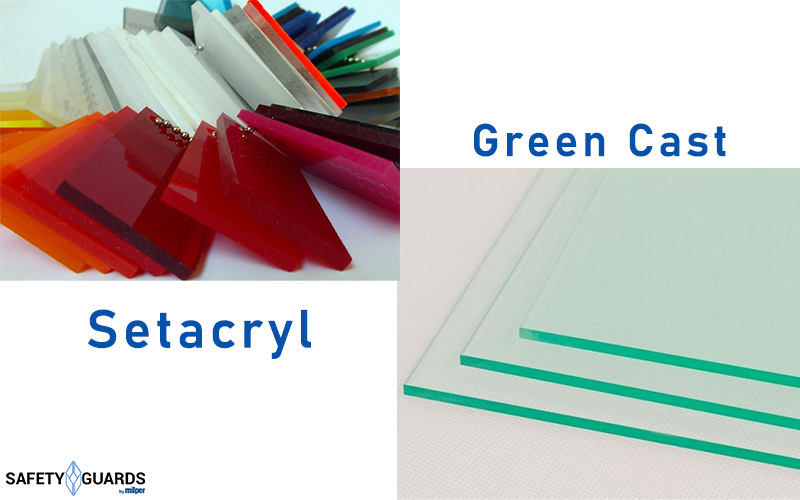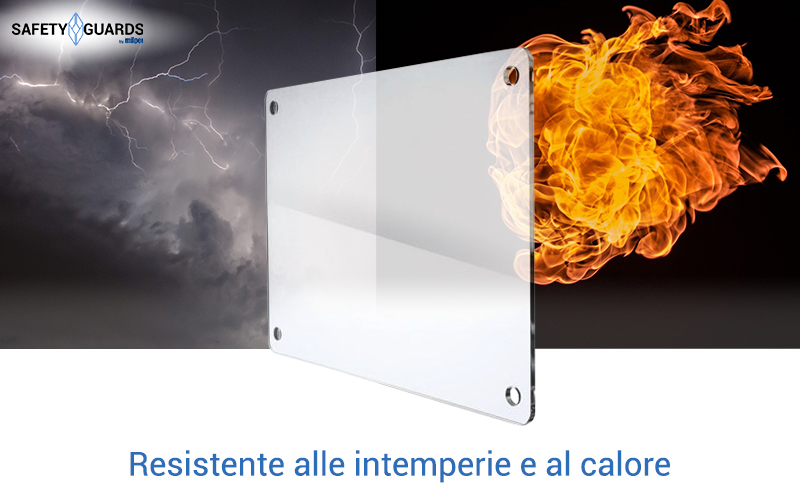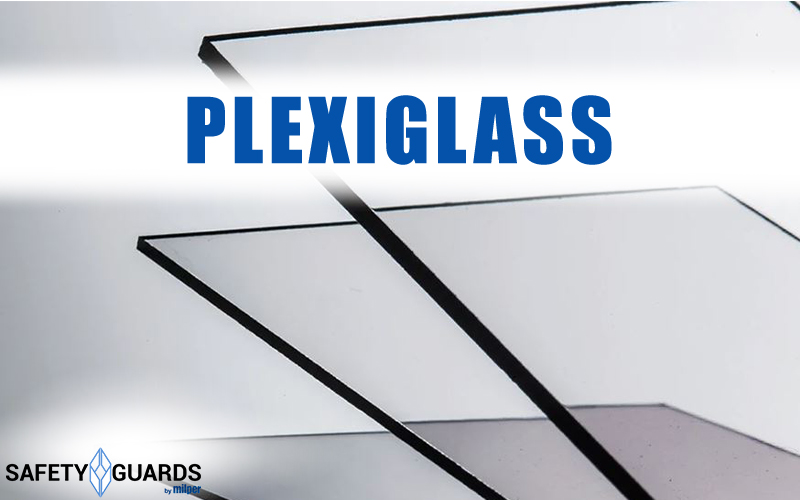PLEXIGLASS SHEETS
INDEX
1. TRANSPARENT PLEXIGLASS: HISTORY
2. TYPES OF PLEXIGLASS
3. HEAT RESISTANT PLEXIGLASS
3. A POINT ON THE TYPES OF PLEXIGLASS
TRANSPARENT PLEXIGLASS: HISTORY
The plexiglass, whose chemical name is Polymethacrylate is a plastic mixture, formed by meracrylate polymers. Its birth dates back to 1928 when several German, English and Spanish students were aimed at the discovery of a material to be used in industry. The definitive formula was found in 1933 and mainly placed on the German market, thanks to the works carried out by Walter Bauer.
In the same year, the first Plexiglass was produced, again in Germany, thanks to Otto Röhm, a famous inventor who registered more than 70 patents during his life. Later, in the following years, it was discovered that the material was very versatile, so much so that it was used in the production of plastic contact lenses and plates for turntables. The revolution had begun and everyone rushed to patent the material under dozens of different names.

TYPES OF PLEXIGLASS
Plexiglass is also known as acrylic, Prespex, methacrylate, etc. The various denominations simply derive from different patents of the various countries and all indicate the same type of material. Today various types are produced depending on the use.
For example, the Grean Casr which derives from 100% recycled material and produced in Italy, or the Setacryl which is a colorful product widely used in the construction and furniture industry. Other differentiations depend on the final use of the processes: we have flame or pad glossy sheets, hot or cold bent, printed or thermoformed. The industry offers a wide range of types of Plexiglass for every consumer need.

HEAT RESISTANT PLEXIGLASS
Compared to other materials that suffer from thermal changes and therefore deteriorate or produce cracks inside, such as glass, Plexiglass is instead very resistant. At a temperature of 100 ° the material begins to become softer and softer, reaching total dissolution towards 480 °, the level at which it produces carbon dioxide and water.
This value is certainly very high, but it remains lower than other materials. Naturally, a continuous stress to continuous sources of heat could cause deformations or bending depending on the phenomenon and thickness.
In this case, to avoid this dynamic, it will be necessary to rely on a specialized company, so as to customize the project based on the conditions existing in the environment. However, it should be emphasized that, with a thickness of at least 3mm, a sheet is practically unbreakable and with excellent resistance.
If we also consider the resistance to UV rays and thermal, acoustic and electrical insulation, it is obvious that the use of Plexiglass panels is an optimal choice to improve the conditions of your property. The inherent defects and sensitivity to heat and scratches are easily circumvented with a good assembly phase and a good initial project.


A POINT ON PLEXIGLASS
To date, Plexiglass is used in the construction field, for Industrial Protections, to add a bright detail to the doors and so on. It can also be used for interior furnishings, lighting, the construction of medical sanitary appliances, for the nautical sector, in the field of advertising and merchandising (displays, luminous signs, display cases).
Also for the repair of machinery, in addition to Industrial Protections for machinery, given the excellent performance of thermal and electrical insulation and the fact that it is an unbreakable material.

